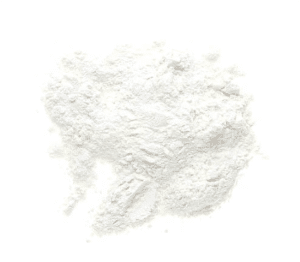Introduction
L-asparaginase is a critical enzyme with significant implications in medical and biological sciences. It is pivotal in cancer treatment, specifically in managing leukemia and lymphoma. Beyond its therapeutic applications, L-asparaginase is vital in biochemical research and industrial processes. This article aims to delve deeply into the biochemical properties, mechanisms of action, therapeutic uses, and other aspects of L-asparaginase.

1.Biochemical Properties of L-Asparaginase
L-asparaginase is an enzyme that catalyzes the hydrolysis of L-asparagine into L-aspartic acid and ammonia. Structurally, it can be classified into two main types based on its source: bacterial and eukaryotic (derived from plants or fungi). Bacterial L-asparaginases, such as those from Escherichia coli and Erwinia chrysanthemi, are commonly used in clinical settings due to their high efficacy and specificity.
►Molecular Structure
The molecular structure of L-asparaginase varies depending on its source but typically consists of subunits that form active sites responsible for substrate binding and catalysis. Bacterial L-asparaginases are tetrameric enzymes composed of identical subunits, whereas eukaryotic forms may differ in their quaternary structure.
►Mechanism of Action
The primary function of L-asparaginase is to deplete circulating levels of L-asparagine in the bloodstream. Many leukemia cells, particularly lymphoblastic leukemias, cannot synthesize L-asparagine due to deficiencies in asparagine synthetase. Therefore, they rely on extracellular sources of L-asparagine for survival and proliferation. L-asparaginase disrupts this dependency by converting L-asparagine into L-aspartic acid and ammonia, leading to deprivation-induced apoptosis (programmed cell death) of cancer cells.
►Enzymatic Kinetics
The enzymatic activity of L-asparaginase follows Michaelis-Menten kinetics, where the rate of L-asparagine hydrolysis depends on substrate concentration and enzyme affinity. Understanding these kinetic properties is crucial for optimizing dosing regimens and predicting therapeutic outcomes in clinical practice.
2. Medical Applications of L-Asparaginase
►Treatment of Acute Lymphoblastic Leukemia (ALL)
L-asparaginase has been a cornerstone in treating ALL, particularly in pediatric patients. By depleting circulating L-asparagine, L-asparaginase effectively targets leukemia cells while sparing normal cells that can synthesize L-asparagine. This selective cytotoxicity makes L-asparaginase a potent chemotherapeutic agent in combination regimens for inducing remission and preventing relapse in ALL.
►Management of Other Hematologic Malignancies
In addition to ALL, L-asparaginase has shown efficacy in treating other hematologic malignancies, including non-Hodgkin lymphoma and acute myeloid leukemia. Its role may vary depending on the specific characteristics of the disease and the patient’s response to initial treatments.
►Hypersensitivity Reactions and Immunogenicity
Despite its therapeutic benefits, L-asparaginase treatment can be associated with hypersensitivity reactions due to immune responses against the enzyme. Strategies to mitigate immunogenicity include using pegylated formulations or alternating between bacterial and eukaryotic sources of L-asparaginase.
3. Biotechnological and Industrial Applications
►Production of L-Asparaginase
The industrial production of L-asparaginase involves fermentation using microbial sources, such as Escherichia coli and Erwinia chrysanthemi. Optimization of growth conditions, substrate utilization, and purification methods are critical for achieving high yields of active enzymes suitable for pharmaceutical and biotechnological applications.
►Food Industry
L-asparaginase finds applications in the food industry to mitigate acrylamide formation during food processing, particularly in high-temperature cooking processes that involve carbohydrates and amino acids. Acrylamide is a potential carcinogen formed through Maillard reactions and is regulated in food products worldwide.
►Biomedical Research
Beyond its clinical and industrial uses, L-asparaginase is a valuable tool in biochemical and biomedical research. Its ability to selectively deplete L-asparagine has implications for studying metabolic pathways, cellular responses to nutrient deprivation, and cancer cell survival and apoptosis mechanisms.
4. Future Directions and Challenges
►Novel Formulations and Delivery Systems
Ongoing research focuses on developing novel formulations of L-asparaginase with improved pharmacokinetic properties, reduced immunogenicity, and enhanced stability. These advancements aim to optimize therapeutic outcomes while minimizing adverse effects associated with conventional formulations.
►Targeted Therapies and Personalized Medicine
Advances in genomics and molecular profiling are paving the way for personalized medicine approaches in cancer treatment. Integrating L-asparaginase into targeted therapy regimens based on individual patient characteristics is promising for optimizing treatment efficacy and minimizing off-target effects.
►Immunotherapy Combinations
Combination therapies incorporating L-asparaginase with immunotherapeutic agents, such as monoclonal antibodies and immune checkpoint inhibitors, are under investigation to enhance antitumor immune responses and overcome resistance mechanisms in cancer cells.
5. Conclusion
L-asparaginase is a remarkable enzyme with multifaceted roles in medicine, biotechnology, and scientific research. Its ability to selectively target cancer cells by depleting essential nutrients underscores its importance in treating hematologic malignancies, particularly ALL. Advances in enzyme engineering, formulation development, and personalized medicine are expected to expand the therapeutic applications of L-asparaginase further and improve outcomes for patients with cancer and other diseases.
